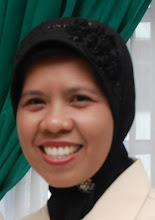
The following synopsis of The Teaching Police by Jonathan Marks is rewritten by Mardiana. This synopsis is expected to widen our perspective in conducting lesson to students by pondering some aspects. This article is adopted from The Forum.
The Teaching Police
Jonathan Marks
Teacher’s law and teacher’s lore
Jonathan Marks really expresses his concerns toward the unwritten law and methodological traditions imposed on teaching techniques and approaches. In the article of The Teaching Police, he reconsiders aspects of teaching such as Teacher Talking Time (TTT), Teacher’s intervention, Being silent, Translating using mother tongue, Peer correction, Recording, Listening task, and Writing in class.
From his viewpoint, TTT is not always bad idea for teacher whereas it is absolutely forbidden according to the Teaching Police. He assumes that TTT would be significantly useful in terms of elaborating any idea to the students. He also agrees that students would also benefit from TTT since they assume the teacher is presumably the best speaker of English in the room. TTT is viewed as negative when teacher cannot control their time.
The other aspect observed is Teacher intervention in fluency activities. Teachers are recommended not to interfere during the ‘fluency’ activities since it will obstruct the students’ flow of thought. In an actual condition, teacher may get engaged with students’ activity and try to use this chance to model language for better performance in terms of accuracy but then again not to dominate the situation.
In contrast with the situation above, there will be time when students keep silent. Naturally, language class should be filled with conversations and interactions. However as Marks rightly points out, students also need time of their own to ponder and they need to process what they just learnt. Later on, teacher can expect students to better comprehend the lesson.
The next condition is when both students and teacher are not allowed to use L1 (first language) in the class. According to Marks, students need something to relate themselves to the new ideas. Particularly, for students who just learnt English in the early stage, they need the teacher to explain things in L1 (this condition is possible if teacher speaks students’ L1).
The other ‘unwritten law’ the Teaching Police recommend is that teachers let students correct each other. According to them this process can encourage as supportive, cooperative classroom environment but Marks suggests it may at the same time cause further confusion among them. Teachers’ correction is still expected.
Furthermore, Marks, also comments on the method of improving students’ repertoire in listening. According to the Teaching Police audio and video recording can help students develop their listening skill with the range of different voices, sexes, ages, accents, personal expression, dialogue as well as monologue. In reality, students cannot expect to have prearranged situation as in the video. Another negative point is that it is one way communication. In the real communication, we listen and respond. We also ask for confirmation on information that we are not sure about.
The last thing Marks discusses is on the topic of writing tasks for students in class. The Teaching Police thinks that writing activity is better done at home as homework rather than in class. On the other hand, Marks views it differently that this activity will show the process of individual learning of their linguistic accuracy. At this point, students may need teacher’s help, advice and feedback before they turn in the final writing task.
Even one can agree with Jonathan Marks’ efforts in restoring the value of the teaching material and approaches , we also need to be more aware about our own situations and try to modify the “law and lore “ of teaching to meet our goals and students’ need in general.


